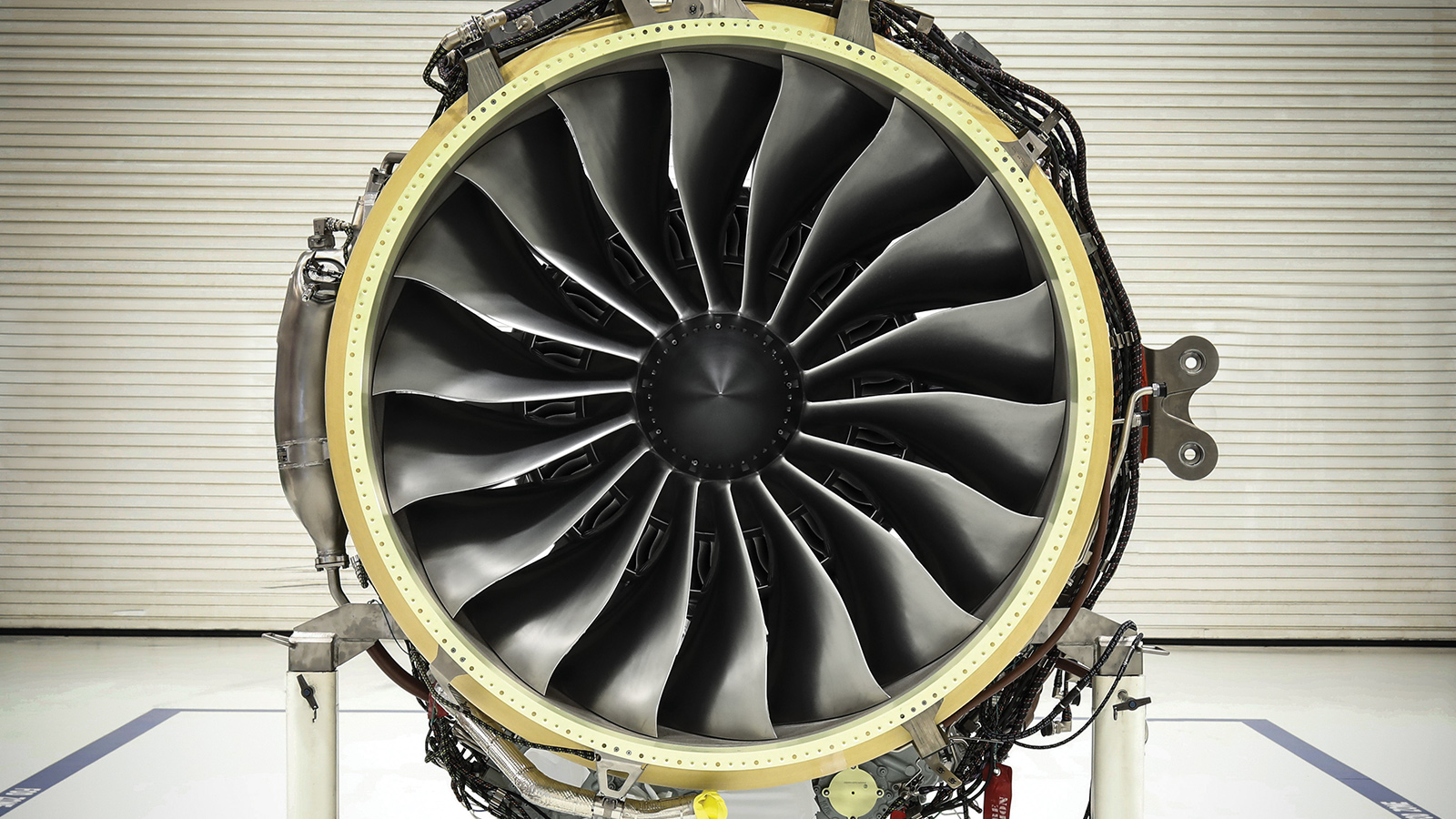Stay Up to Date
Submit your email address to receive the latest industry and Aerospace America news.
The Gas Turbine Engines Technical Committee works to advance the science and technology of aircraft gas turbine engines and engine components.
Gas turbine engine manufacturers continued developing technologies to improve engine performance and durability and to reduce maintenance and environmental impact this year, setting many records along the way.
In June, Pratt & Whitney of Connecticut completed an accelerated endurance test to assess PW1100G geared turbofan engine hot-section durability. Half of the new airline passengers over the next 20 years are expected to come from the equatorial and Asian region, an area of significant atmospheric dust and pollutants that affect engine life. Pratt & Whitney’s newly developed severe environment testing in West Palm Beach, Florida, coupled with modeling technology, expedited design enhancements by duplicating damage observed in three to four years of flight time on the Airbus A320neo with just three months of testing. An average loading of dirt, determined by examining thousands of flights, replicated realistic severe operating conditions. Dirt supplied at these concentrations mimics flight exposure, especially in the eastern equatorial region of the world, specifically in Africa, Middle Eastern countries, India, China and the Pacific Islands.
Rolls-Royce of England tested an M250 turbine engine in a hybrid electric propulsion system at a test facility in Indianapolis in March. The test matured the hybrid electric system for future aircraft and served as a prototype for larger aircraft. The M250, which typically powers helicopters, demonstrated operation in series hybrid, parallel hybrid and turbo-electric modes.
In June, Rolls-Royce and Aeroflot of Russia celebrated a record for a widebody engine in service. One of Aeroflot’s Trent 700 engines completed 50,000 engine flying hours without requiring an overhaul. The engine first entered service in 2008 and powers an Airbus A330 aircraft.
GE Aviation of Ohio accrued 300 hours of flight time on the GE9X engine during a second wave of flight testing that concluded in May on GE’s 747 Flying Test Bed in Victorville, California. In total, GE flight-tested the GE9X for about 500 hours. GE also announced in July that the GE9X set a new Guinness World Records title after reaching 134,300 pounds of thrust (597 kilonewtons) in a November 2017 test at its Peebles, Ohio, test stand.
GE Aviation announced in June at the Paris Air Show several records set by the 18,000-pound thrust (80 kN) Passport engine. Since beginning operation in December 2018, the Passport-
powered Bombardier Global 7500 set multiple records for a business jet, including a speed record from New York to Los Angeles with flight time of 3 hours, 54 minutes and a top speed of Mach 0.925 in March. Bombardier, headquartered in Montreal also set a nonstop distance record with the Global 7500 of nearly 15,100 kilometers, flown between Singapore and Tucson, Arizona, in March.
At the Paris Air Show, GE Aviation, Rolls-Royce and United Technologies Corp. (parent company of Pratt & Whitney) announced with several airframe suppliers a commitment to continue developing technologies to aggressively reduce emissions by 2050. Reductions, as stated in “The Sustainability of Aviation” are “enabled by advances in new architectures, advanced engine thermodynamic efficiencies, electric and hybrid-electric propulsion, digitization, artificial intelligence, materials and manufacturing.” The announcement demonstrated the strong commitment of the aviation industry to rapid technology growth for decades to come.
Related Posts
Stay Up to Date
Submit your email address to receive the latest industry and Aerospace America news.




